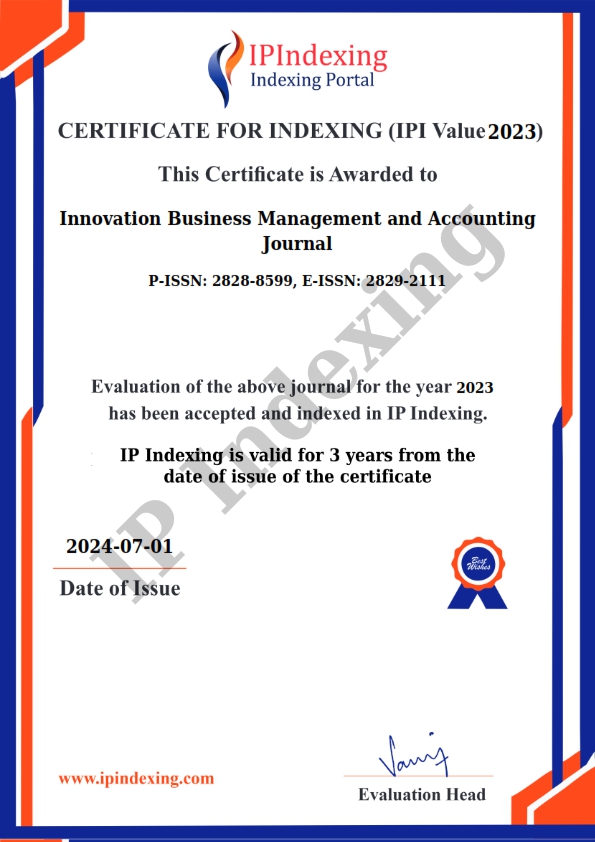Evaluation of The Implementation of Loading and Unloading Service Standards in the Talang Duku Port Area, Muaro Jambi Regency
DOI:
https://doi.org/10.56070/ibmaj.2025.033Keywords:
Evaluation, Port, Service StandardsAbstract
Duku Port, located along the Batanghari River, plays a strategic role as a gateway for international trade in the Jambi region. However, the port faces significant challenges due to the shallow river channel, which limits access for large-tonnage vessels. Only smaller ships can operate safely, while larger vessels must wait for high tide or divert to other ports. This condition reduces the port’s operational performance, decreases revenue, and hinders regional economic growth. Although these issues have been acknowledged, comprehensive evaluations of cargo handling service standards remain limited. This study aims to assess the effectiveness of these service standards through a qualitative case study approach. Data were collected through in-depth interviews, direct observation, and document analysis, followed by descriptive and interpretive analysis. The findings indicate that the implementation of service standards has improved loading and unloading efficiency and reduced operational costs. Nevertheless, technical and service-related limitations persist. Therefore, strengthening infrastructure, conducting regular training, and adopting new technologies are essential. This study highlights the need for continuous evaluation and improvement of service standards to ensure safe and efficient port operations that support international trade and regional economic development.
Downloads
References
Agrawal, T. K., Hanson, R., Sultan, F. A., Johansson, M. I., Andersson, D., Stefansson, G., Katsela, K., & Browne, M. (2023). Automating loading and unloading for autonomous transport: Identifying challenges and requirements with a systems approach. In H. A. ElMaraghy & M. ElMaraghy (Eds.), Advances in production management systems. Production management systems for responsible manufacturing, service, and logistics futures (pp. 332–345). Springer. https://doi.org/10.1007/978-3-031-43670-3_23
Amiruddin, S. (2023). Effectiveness of Law Enforcement Against Criminal Acts of Corruption in Public Services Based on Law Number 25 of 2009 Concerning Public Services.
Cullinane, K., & Wilmsmeier, G. (2011). The contribution of the dry port concept to the extension of port life cycles. In R. W. B. Robinson, K. Cullinane, & G. Wilmsmeier (Eds.), Maritime transport: The evolution of international marine policy and shipping (pp. 359–379). Springer. https://doi.org/10.1007/978-1-4419-8408-1_18
Dunn, W. N. (2017). Public policy analysis (6th ed.). Routledge. https://doi.org/10.4324/9781315181226
Duru, O., Galvao, C. B., Mileski, J., Robles, L. T., & Gharehgozli, A. (2020). Developing a comprehensive approach to port performance assessment. The Asian Journal of Shipping and Logistics, 36(4), 169–180. https://doi.org/10.1016/j.ajsl.2020.03.001
George, J., Shafqat, N., Verma, R., & Patidar, A. B. (2023). Factors influencing compliance with personal protective equipment (PPE) use among healthcare workers. Cureus, 15(6), e35269. https://doi.org/10.7759/cureus.35269
Ishtiaq, M. (2019). [Review of the book Research design: Qualitative, quantitative and mixed methods approaches (4th ed.), by J. W. Creswell]. English Language Teaching, 12(5), 40. https://doi.org/10.5539/elt.v12n5p40
Jain, S. K., & Gupta, G. (n.d.). Measuring service quality: SERVQUAL vs. SERVPERF scales (Vol. 29).
Juba, O. O. (2024). Impact of workplace safety, health, and wellness programs on employee engagement and productivity. International Journal of Health, Medicine and Nursing Practice, 6(4), 12–27. https://doi.org/10.47941/ijhmnp.1819
Karpova, N. P. (2022). Modern warehouse management systems. In V. V. Ivanov, V. A. Tarasov, & A. V. Tsvetkov (Eds.), Digital technologies in logistics and infrastructure (pp. 261–267). Springer. https://doi.org/10.1007/978-3-030-83175-2_34
Lun, Y. H. V., Lai, K., Cheng, T. C. E., & Yang, D. (2023). Port operations. In Shipping and logistics management (pp. 201–214). Springer International Publishing. https://doi.org/10.1007/978-3-031-26090-2_13
Mombeni, S., Darestani, S. A., & Shemami, N. H. (2022). Evaluation of the effective factors of unloading and loading goods in ports and the impact on the environment using the MCDM method. Environmental Science and Pollution Research, 30, 14873–14883. https://doi.org/10.1007/s11356-022-23219-x
Suharyono, K. P., Hadiningrat, S., Asmoro, R. S., & Silalahi, V. A. J. M. (2025). Improving ship loading and unloading efficiency through optimizing cargo control room operations. Jurnal Cakrawala Akademika, 1(6), 1890–1907. https://doi.org/10.70182/JCA.v1i6.7
Notteboom, T. E., & Rodrigue, J.-P. (2005). Port regionalization: Towards a new phase in port development. Maritime Policy & Management, 32(3), 297–313. https://doi.org/10.1080/03088830500139885
Rusdianti, I. S., Irmadariyani, R., & Kustono, A. S. (2022). E-finance: Mitigation of fraud tendency in Indonesia. IJEBD International Journal of Entrepreneurship and Business Development, 5(3), 581–589. https://doi.org/10.29138/ijebd.v5i3.1857
Saaty, T. L., & Vargas, L. G. (2001). Models, methods, concepts & applications of the analytic hierarchy process (Vol. 34). Springer US. https://doi.org/10.1007/978-1-4615-1665-1
Shet, S. V., Patil, S. V., & Chandawarkar, M. R. (2019). Competency-based superior performance and organizational effectiveness. International Journal of Productivity and Performance Management, 68(4), 753–773. https://doi.org/10.1108/IJPPM-03-2018-0128
Sutaryanto, S., Sudirman, S., & Ambarwati, A. (2022). Implementation of Regulation of the Minister of Transportation of the Republic of Indonesia Number PM 29 Year 2014 concerning prevention of maritime environmental pollution at Kesyahbandaran Utama Office. International Journal of Education & Social Sciences (IJESS), 3, [no page numbers]. http://www.ijess.org
Talley, W. K., Ng, M., & Marsillac, E. (2014). Port service chains and port performance evaluation. Transportation Research Part E: Logistics and Transportation Review, 69, 236–247. https://doi.org/10.1016/j.tre.2014.05.008
Tan, W. W., Jeffreys, C., & Parolini, A. (2020). Implementing implementation: Integrating the measurement of implementation and effectiveness in complex service systems. In B. Albers, A. Shlonsky, & R. Mildon (Eds.), Implementation science 3.0 (pp. 253–273). Springer International Publishing. https://doi.org/10.1007/978-3-030-03874-8_10
Tiwari, M., Gepp, A., & Kumar, K. (2025). Using data analytics to distinguish legitimate and illegitimate shell companies. Journal of Economic Criminology, 7, 100123. https://doi.org/10.1016/j.jeconc.2024.100123
Tulus, T., Purwati, U., Buchari, E., Kadarsah, E., & Purwati, T. U. (n.d.). Legal aspects & evaluation of operational service performance standards of Boom Baru Container Terminal Palembang.
Utama, D. R., Hamsal, M., Rahim, R. K., & Furinto, A. (2024). The effect of digital adoption and service quality on business sustainability through strategic alliances at port terminals in Indonesia. The Asian Journal of Shipping and Logistics, 40(1), 11–21. https://doi.org/10.1016/j.ajsl.2023.12.001
Wilmsmeier, G., & Monios, J. (2020). Port and dry port life cycles. In R. Bergqvist, K. Woxenius, & G. Wilmsmeier (Eds.), Dry ports – A global perspective (pp. 501–515). Springer. https://doi.org/10.1007/978-3-030-39990-0_22
Downloads
Published
How to Cite
Issue
Section
License
Copyright (c) 2025 Juwita A, Novita Wulandari, M. Abduh

This work is licensed under a Creative Commons Attribution-ShareAlike 4.0 International License.


